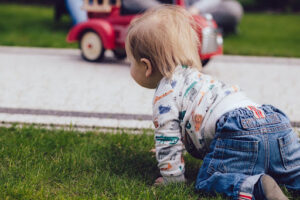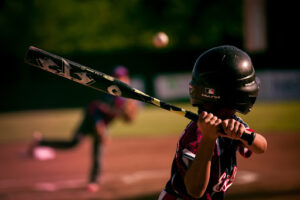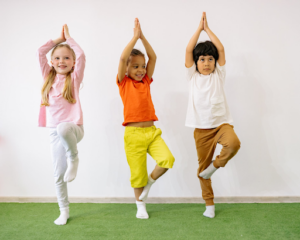
Do you remember back when you first learned to zip up your own jacket? How about tie your shoes? Write your name for the first time? Color carefully to stay inside the lines? You may not have known it then, but as a child you built many of the fine motor coordination skills you still use every day. When you think of “coordination” you might think of playing sports or swimming, and you would be right! However, when we talk about fine motor skills, we also use the word “coordination” to describe how many different muscles in your hands are working together to accomplish the smallest of movements.
Fine motor coordination involves learning many different skills simultaneously in order to have more control and precision over tools or objects in order to be accurate. These skills include having strength in the small muscles within your hand and fingers, developing a good grasp on tools, moving items around your hand without dropping them, and developing precise targeting. As your child practices these skills, he/she will refine these skills to help learn the foundational skills in many different areas of development. In general, large motor skills (stability of the head, core, controlled limb movements), become more consistently accurate before fine motor skills.
What skills should my child have now?
- Around 12 months: Pulling off socks, starts to finger feed self with small table foods, can use a spoon to dip, grasps objects of different sizes, uses their whole hand to grasp around writing utensils, places and releases small objects down on a flat surface
- Around 24 months: Pulling off untied shoes, can use a fork to pierce food, and a spoon efficiently to transfer food, shows an interest in scissors but may not be able to open and close them with one hand, may use a pronated (thumb side of hand down) grasp on writing utensils, they are starting to pick up small items and tuck them into their palm, they are starting to place items from the inside of their palm down by passing them to the finger tips, they consistently rotate items 90 degrees using just their finger pads (such as when taking the top off a small twist top jar)
- Around 36 months: Unbuttoning large buttons on a jacket, pulling on socks with some help, can open and close scissors, and snip through paper, may continue to use a pronated (thumb side of hand down) grasp on writing utensils
- Around 3rd birthday: Putting shoes with Velcro fasteners, putting on socks, zipping and unzipping a jacket (help putting both sides together at bottom), buttons large buttons on a jacket, starts to use scissors to cut through paper, over the next year practices pushing scissors forward to cut on a line, starts using a three-finger grasp that is looser and their arms and shoulder move lots when coloring
- Around 4th birthday: Able to put together jackets that have a snap or hook fastener, some snaps on pants, zipping jacket independently, puts on shoes (needs help with tying laces), can put a belt through loops, pushes scissors to cut out simple shapes, over the next year starts cutting curved lines and circles, your child continues to get more efficient and accurate with drawing with their three-finger grasp, they are able to separate two pieces of paper by rubbing their fingers together
- Around 5th birthday: Can tie knots, improved accuracy with scissors, the child uses a dynamic grasp (three fingers on utensil near the tip, their shoulder/arm are stable, their fingers and wrist are controlling movements, they are more accurate and efficient with this grasp, they can adjust their grasp on a pencil by moving it between their fingers
- Around 6th birthday: Can tie a bow, independently manage shoes, other clothing fasteners, can cut more complex figures, they can flip a pencil around to reach the eraser without picking up and moving the pencil, they can pick up small items sequentially while holding other small items in their hands
My child isn’t ready to tie their shoes or write yet; why do these skills matter now?
Fine motor coordination skills are built over a long period of time, and gradually get more complex as a child gets older. Foundational skills in this area, such as grasping tools and moving small items from the palm to tips of the fingers, are key for later important skills such as writing, typing, cutting, money management, using utensils to eat, tying shoes, and managing fasteners on clothing. A child may become successful and efficient with navigating these skills as they continue to develop other skills through play and participation in daily routines.
Why do occupational therapists work on these skills?
Occupational therapists focus on these skills because they are a part of our daily living skills, from putting toothpaste on our toothbrush, to getting dressed, to participating in school, and feeding ourselves! Children use their fine motor coordination skills during daily living activities, in education, and in play, all areas which are covered by the domain of occupational therapy! During an occupational therapy evaluation, a therapist would look more in depth at your child’s fine motor coordination skills for their age.
What can I do?
- Play games while picking up small items with kitchen tongs, chopsticks attached at the top with a rubber band and paper, or a straw bent in half to form tongs
- Snap/button art boards
- Puzzles with different snaps, buckles, locks to open
- Read books with flaps to lift up to reveal pictures below
- Practice tearing paper with your child, crumpling it up between your fingers, and using it in an art project, such as gluing it onto a snowman outline to make it 3-D.
- Make a paper cup lantern by pushing a paper clip through the side of the cup and place an LED tea light inside
- String beads or pasta on spaghetti noodles, string, or pipe cleaners
- Make PlayDoh with salt, flour, and cream of tartar. Roll it into snakes, small balls, build tiny snowmen
- Let your child practice opening items in the house for food consumption, such as bags of chips, twist off applesauce pouches/water bottles,
- Tape small animals to a baking sheet and practice pulling the small pieces of tape off
- Cut a slot in the top of an oats container. Have your child practice placing popsicle sticks in the slot; recreate this activity with Q-tips and a plastic lid with a straw hole, sort coins into different piggy banks
- Stretch rubber bands around the outside of a small jar
- Pull pom poms or other small items out of a kitchen whisk
- Decorate cookies and allow your child to pick up the small sprinkles and push them into the dough
- Let your child have as much practice as possible with fasteners (snaps, buttons, zippers, and shoe tying)
- Cut through different layers/thicknesses of paper (tissue paper, paper, paper plates, cardboard)
- Increase your child’s opportunities to practice writing outside of school by having the child write the score of a game, write letters to family members, write the list of items needed at the store
- Use a stylus if your child plays games on a device. There are apps to practice coordination while using a stylus such as: iTrace, LetterSchool, Dexteria Jr, Writing Wizard, Trace it/Try it
- Paint using the ends of Q-tips to make small dots on paper to draw fireworks
- When recycling boxes, have your child cut the box instead of breaking it down for extra scissor practice
- Allow your child to practice peeling fruit, picking the stems off the ends of beans, etc.
- Hide toys in small jars and bottles, and have the child practice getting them out by twisting open the top
Questions or concerns?
If you have questions or concerns about your child’s fine motor coordination, please contact us at info@playworkschicago.com of 773-332-9439
Caroline Stevens, MS, OTR/L
Occupational Therapist
References: Fleming-Castaldy, Rita. (2019). National occupational therapy certification exam review and study guide. 8thedition. Therapyed.
Photo Credit: Markus Spiske via unsplash.com





